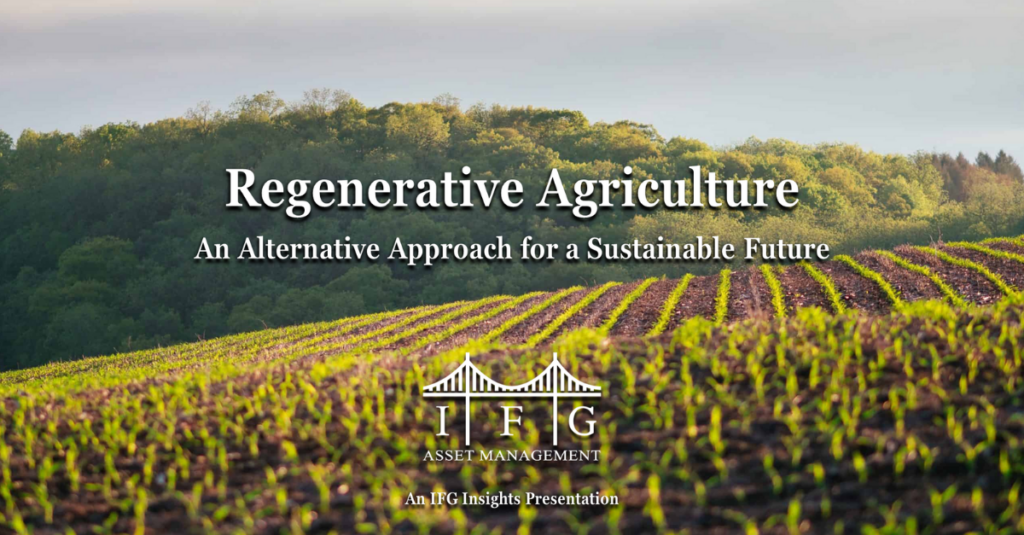What is Regenerative Agriculture?
Regenerative agriculture is an alternative farming approach aimed at enhancing food production’s sustainability. It is recognized for its potential to provide environmental and social benefits, such as improving soil health and restoring degraded lands, which in turn enhances water quality, vegetation, and land productivity. Moreover, it plays a role in climate change mitigation by potentially sequestering more carbon dioxide than it produces.
This agricultural strategy has received substantial attention from various sectors including researchers, educators, government bodies, and media. Educational institutions are focusing on teaching the benefits of regenerative agriculture and its contribution to climate action plans. For instance, international bodies like the Intergovernmental Panel on Climate Change have listed regenerative agriculture as a sustainable land management practice.
Regenerative agriculture’s core principles center around improving soil health, increasing biodiversity, sequestering carbon, advocating for the humane treatment of livestock and farmworkers, and enhancing the overall ecosystem. It encompasses practices like crop rotation, cover cropping, minimal tillage, managed grazing, and animal integration, with an emphasis on composting. These practices stem from a blend of contemporary scientific knowledge and traditional farming practices cultivated by various cultures and communities worldwide. Regenerative agriculture aims to foster a food system that meets the needs of both the present and future generations, paving the way for a more sustainable and resilient future for agriculture.

Regenerative Agriculture Practices
Soil Health: Improving soil health is a key aspect of regenerative agriculture, focusing on maintaining the soil’s natural structure, enhancing fertility, and supporting a diverse soil microbiome. Techniques used
include no-till or reduced-till farming, which limit soil disruption and erosion, and the use of cover crops to add organic matter and natural nutrients to the soil. Composting is also employed to recycle organic waste into nutrient-rich soil amendments. Additionally, green manure—crops specifically grown to be returned to the soil—contributes to enhancing soil fertility. Together, these practices form a comprehensive approach to nurturing soil health in a regenerative agricultural system.
Biodiversity: Increasing biodiversity is a central tenet of regenerative agriculture, with the objective of creating a thriving and diverse ecosystem. Practices such as polyculture, agroforestry, and integrated pest management are used to enhance biodiversity on the farm. Polyculture involves growing multiple crops in the same space, which promotes a variety of plant species and reduces pest pressures. Agroforestry, which combines trees, crops, and/or livestock on the same land, provides habitats for various species, contributing to a richer ecosystem. Integrated pest management employs natural predators and plant diversity to control pests instead of relying on synthetic pesticides. These strategies, when used collectively, offer a holistic approach to boosting biodiversity in a regenerative agriculture context.

Carbon Sequestration: Carbon sequestration is a key pillar of regenerative agriculture, contributing significantly to climate change mitigation by absorbing and storing atmospheric carbon dioxide in plants and soil. One such technique is the use of biochar, a form of charcoal derived from plant matter that, when applied to the soil, acts as a potent carbon sink, locking away carbon for potentially thousands of years. Perennial cropping systems, where crops grow year-round to cover and protect the soil, also contribute to carbon sequestration, enhancing soil health and biodiversity along the way. Moreover, managed grazing systems, which strategically rotate livestock across pastures to allow for periods of recovery and growth, can boost soil health and productivity, further aiding in carbon storage. These practices illustrate the holistic and sustainable approach of regenerative agriculture in not only promoting biodiversity and soil health, but also actively sequestering carbon.

Why Regenerative Agriculture?
We believe embracing regenerative agriculture is central to humanity’s commitment to a healthier planet. This approach goes beyond sustainability to actively restore and regenerate ecosystems, contributing significantly to biodiversity and soil fertility, and leading to a reduction in the need for chemical fertilizers and pesticides. By supporting regenerative agriculture, we’re investing in the future of our planet, promoting a model of farming that can potentially reverse environmental degradation and combat the challenges of climate change. In the long run, we believe that such environmentally sound strategies will prove to be not just ethical choices, but sound financial decisions as well.
We see our commitment to regenerative agriculture not just as an investment in the environment, but also as a strategic approach to risk management and long-term profitability. We believe in supporting businesses that prioritize regenerative farming, a move that promotes the health of soil and ecosystems, leading to more productive and resilient farms. This strategy does more than just stabilize returns for our investors; it contributes to a future where our portfolios are more resistant to the financial implications of climate change. By embracing regenerative practices, we are playing our part in enhancing carbon sequestration, reducing greenhouse gas emissions, and truly future-proofing our investments. This approach underlines our dedication to the cause and our belief that financial prudence and environmental stewardship can, and indeed must, go hand in hand.
We believe that regenerative agriculture provides us with an opportunity to create real societal impact while generating attractive returns for our clients. By backing businesses that use regenerative farming methods, we promote food security, rural development, and biodiversity, aligning with the growing desire of investors to support ESG compatible businesses. As a forward-thinking Investment, Advisory, and Asset Management company, we believe investment opportunities that promote and support regenerative agriculture practices can deliver both attractive returns and positive societal change.
To Learn More about the importance of Regenerative Agriculture practices, read the full IFG Insights presentation on Regenerative Agriculture by clicking on the Download button below.

Download Regenerative Agriculture: An Alternative Approach for a Sustainable Future
Learn more about the importance of Regenerative Agriculture and IFG’s commitment to supporting innovation, sustainability, and the preservation of our planet’s natural resources through our impact-focused advisory and investment activities.



